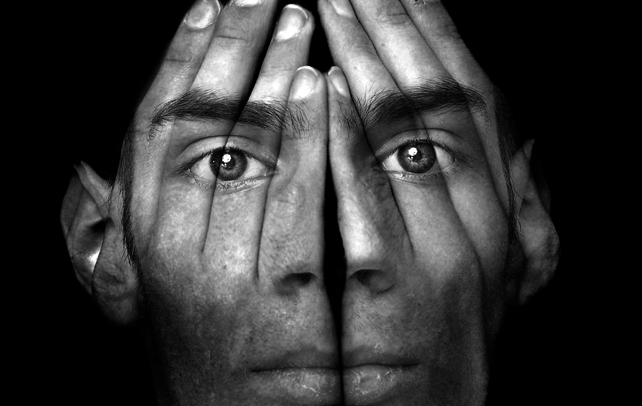Social Anxiety (SAD) & Avoidant Personality Disorder (AVPD)
What is Social Anxiety?
by Thomas A. Richards, Ph.D. Psychologist/Director, The Social Anxiety Institute Social anxiety is the fear of being judged and evaluated negatively by other people, leading to feelings of inadequacy, inferiority, self-consciousness, embarrassment, humiliation, and depression. If a person usually becomes (irrationally) anxious in social situations, but seems better when they are alone, then “social anxiety” may be the problem.

The Third Largest Mental Health Care Problem
Social anxiety disorder (formerly termed “social phobia”) is a much more common problem than past estimates have led us to believe. Millions of people all over the world suffer from this devastating and traumatic condition every day, either from a specific social anxiety or from a more generalized social anxiety. In the United States, epidemiological studies have recently pegged social anxiety disorder as the third largest psychological disorder in the country, after depression and alcoholism. It is estimated that about 7% of the population suffers from some form of social anxiety at the present time. The lifetime prevalence rate for developing social anxiety disorder is 13-14%.
Specific and Generalized Social Anxieties
A specific social anxiety would be the fear of speaking in front of groups (only), whereas people with generalized social anxiety are anxious, nervous, and uncomfortable in almost all social situations. It is much more common for people with social anxiety to have a generalized type of this disorder. When anticipatory anxiety, worry, indecision, depression, embarrassment, feelings of inferiority, and self-blame are involved across most life situations, a generalized form of social anxiety is at work.
Symptoms of Social Anxiety Disorder ( SAD)
People with social anxiety disorder usually experience significant emotional distress in the following situations:
- Being introduced to other people
- Being teased or criticized
- Being the center of attention
- Being watched while doing something
- Meeting people in authority (“important people”)
- Most social encounters, especially with strangers
- Going around the room (or table) in a circle and having to say something
- Interpersonal relationships, whether friendships or romantic
This list is certainly not a complete list of symptoms — other feelings have been associated with social anxiety as well. The physiological manifestations that accompany social anxiety may include intense fear, racing heart, turning red or blushing, excessive sweating, dry throat and mouth, trembling (fear of picking up a glass of water or using utensils to eat), swallowing with difficulty, and muscle twitches, particularly around the face and neck. Constant, intense anxiety that does not go away is the most common feature. People with social anxiety disorder know that their anxiety is irrational and does not make rational (i.e., cognitive) sense. Nevertheless, “knowing” something is not the same thing as “believing” and “feeling” something. Thus, for people with social anxiety, thoughts and feelings of anxiety persist and show no signs of going away — despite the fact that socially-anxious people “face their fears” every day of their lives. Only the appropriate treatment works to alleviate social anxiety disorder, the largest anxiety disorder, and the one that few people know anything about.
AVPD and SAD Differences and Treatments
:max_bytes(150000):strip_icc():format(webp)/GettyImages-543221031-56f0c4f33df78ce5f83b76de.jpg)
Avoidant personality disorder (AVPD) is usually first noticed in early adulthood and is present in a variety of situations. People with AVPD have many of the same characteristics as those with social anxiety disorder (SAD); however, the severity of the symptoms is greater. If you have been diagnosed with avoidant personality disorder
- you tend to have low self-esteem, strong feelings of inadequacy and a sensitivity to rejection.
- In new social settings, you will become extremely self-conscious, shy or inhibited and will be preoccupied with being criticized or rejected.
- You tend to view yourself as socially inept, personally unappealing or inferior to others.
- In interpersonal relationships, you will show restraint.
- You tend not to trust others and avoid relationships unless you are certain of being liked. Often, people with AVPD become socially isolated as a result of this avoidance.
Avoidant personality disorder often interferes with occupational functioning. People with the disorder will avoid work that requires interpersonal contact and are reluctant to take risks or engage in new activities. In general, personality disorders are diagnosed when there is impairment in personality functioning (self and interpersonal), and the impairment is stable across time and situations. People with AVPD also display detachment characterized by withdrawal (being reticent in social situations, avoiding social contact, failing to initiate social contact), avoidance of intimacy (avoidance of close or romantic relationships, interpersonal attachment, or intimate sexual relations), and anhedonia (lack of enjoyment or failure to engage in life’s experiences; trouble experiencing pleasure or taking an interest in things). Finally, they also experience negative affect characterized by anxiousness, nervousness, tenseness or panic, often related to social situations; worrying about past and present experiences; fear of uncertainty; and fear of being embarrassed.
Similarity to SAD
Research has found few differences between the kinds of symptoms that people with social anxiety disorder and AVPD have.
Because of the similarities between social anxiety disorder and avoidant personality disorder, people are often diagnosed as having both disorders (estimated between 16 to 57% of the time).
Like SAD, the central fear of people with AVPD is rejection, ridicule and humiliation by others. However, people with avoidant personality disorder have a broader range of symptoms, and the symptoms are more severe. In this way, AVPD has more to do with a person’s personality and may appear more stable over time and from one situation to another, while SAD tends to separate itself from the personality, may come and go depending on the situation, and may be easier to change or treat.
Genetic Basis
A twin study conducted in 2007 found that those with social anxiety disorder and AVPD had the same underlying genetic vulnerabilities. These findings indicated that environmental factors may play a role in determining who develops social anxiety disorder versus avoidant personality disorder. For example, a critical or ridiculing parent may instill lifelong feelings of inadequacy that could push what might otherwise be SAD into the more severe AVPD. In addition, AVPD might evolve from an earlier untreated case of SAD.
Treatment of APD
AVPD is treated in much the same way as social anxiety disorder. Each of the following has been shown to have some impact on the disorder:
- cognitive-behavioral therapy
- social skills training
- group therapy
- medication
However, it is sometimes difficult for people with avoidant personality disorder to trust their therapist enough to complete treatment. This is true of many personality disorders, as lack of trust, paranoia, and inability to see reality clearly become interfering issues during treatment. Indeed, trust may be one of the more important defining factors between SAD and AVPD. While those with SAD tend to fear judgment by others, those with AVPD go so far as to be wary and distrustful of the motives of others—a characteristic shared by other personality disorders grouped on Axis II in the classification of the Diagnostic and Statistical Manual of Mental Disorders (DSM-5).
Thoughts from Therapy 121
If you believe you or someone you know may be suffering with the symptoms of AVPD or SAD, speak to a professional as soon as possible. If left untreated, avoidant personality disorder can lead to impairment in functioning in most areas of a person’s life.
